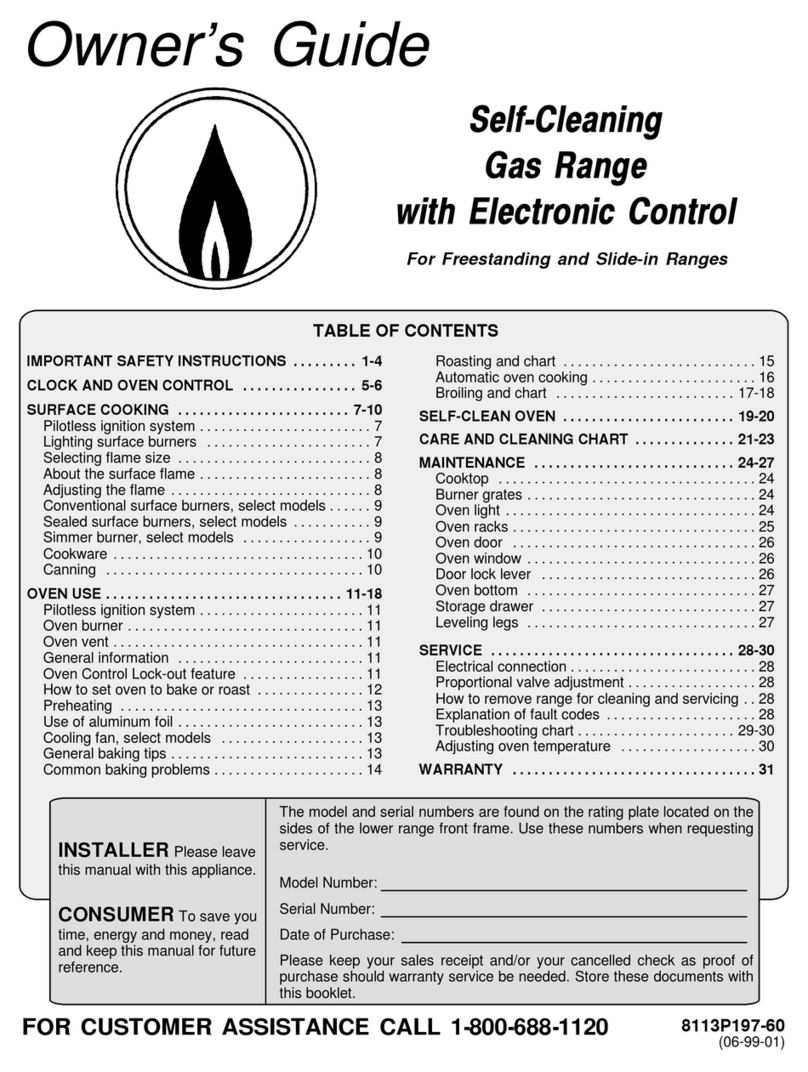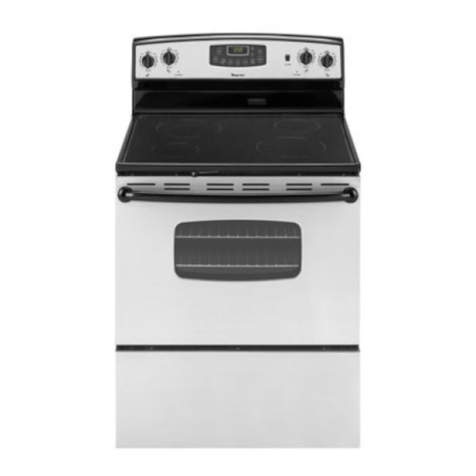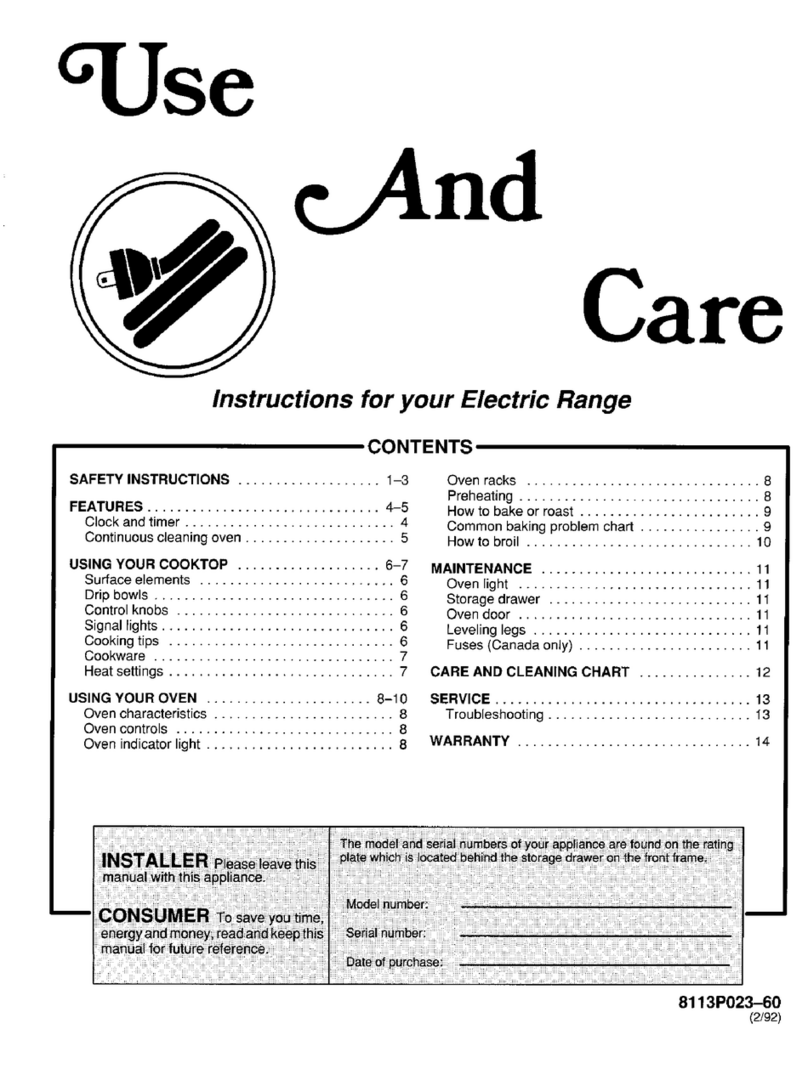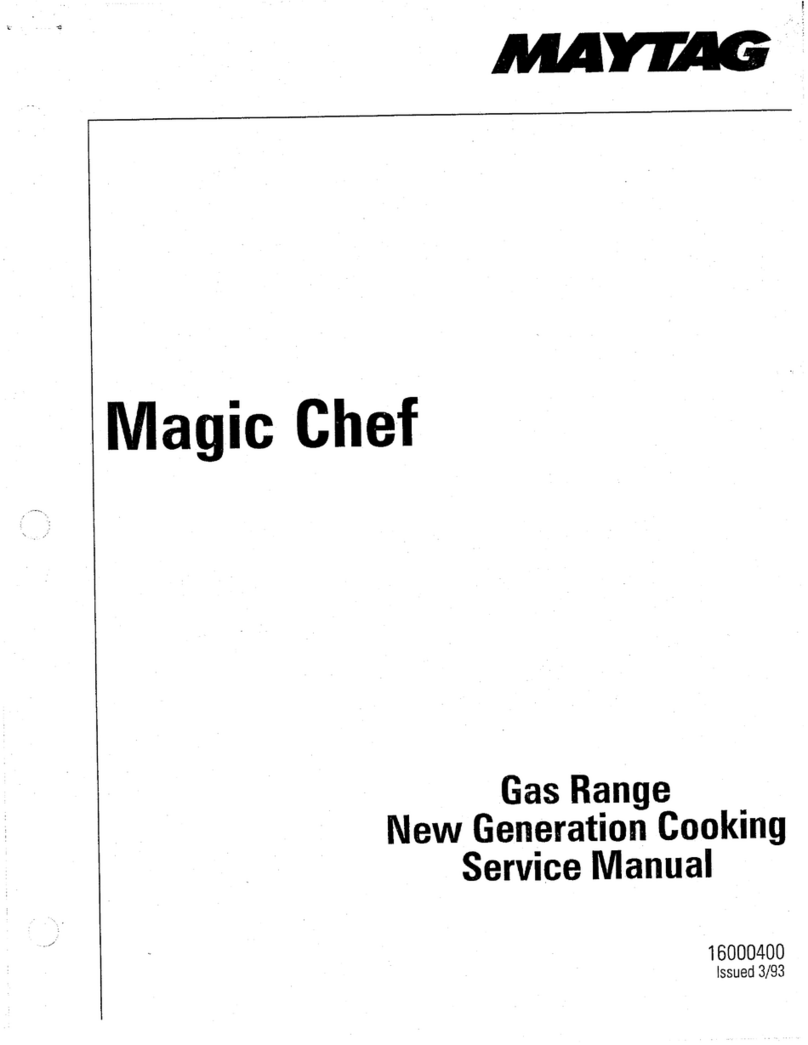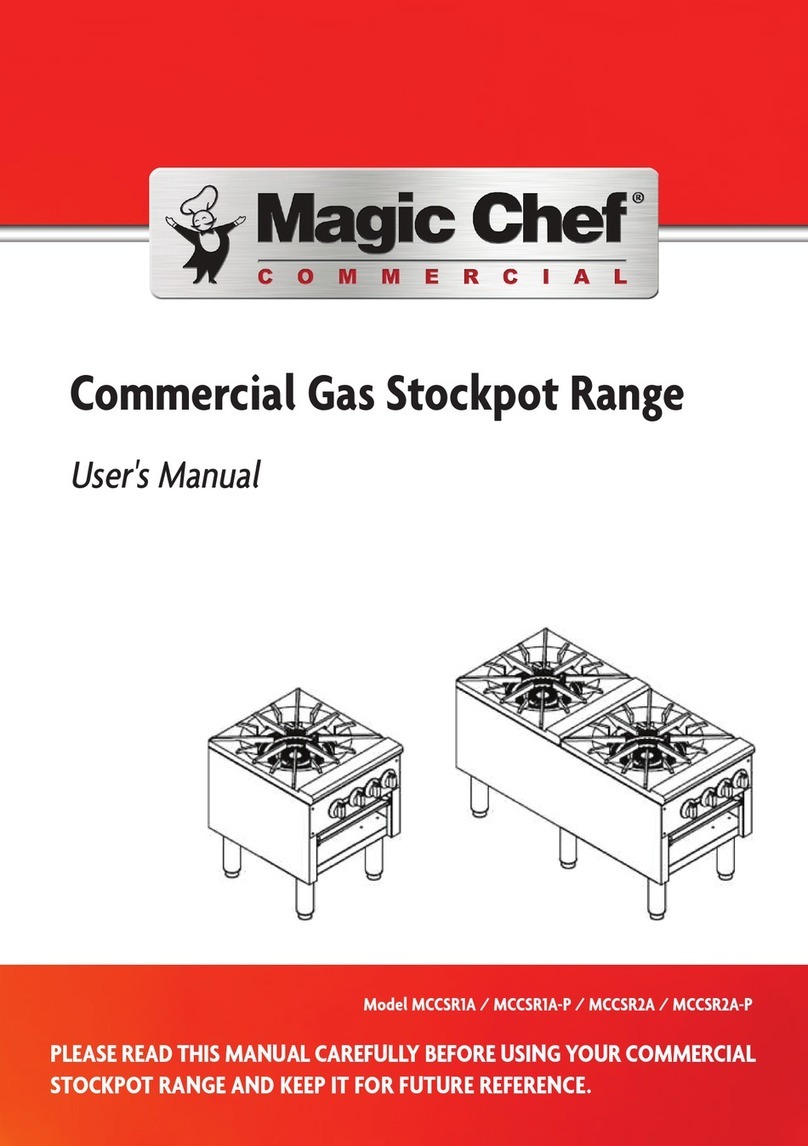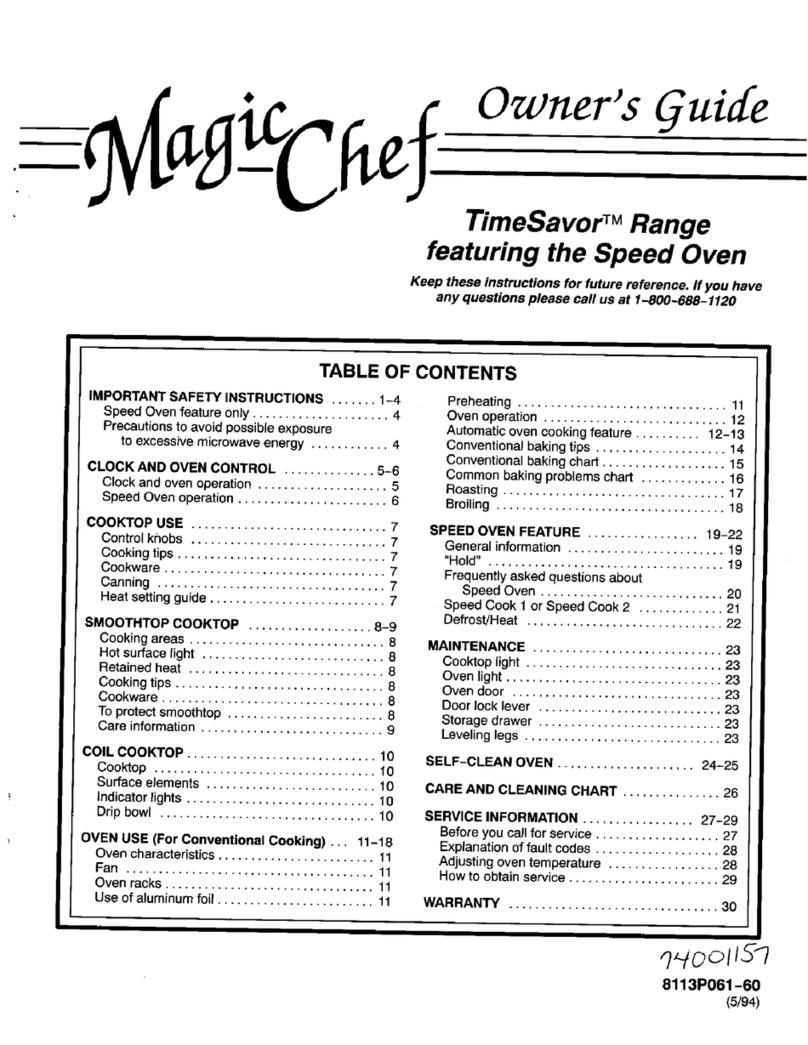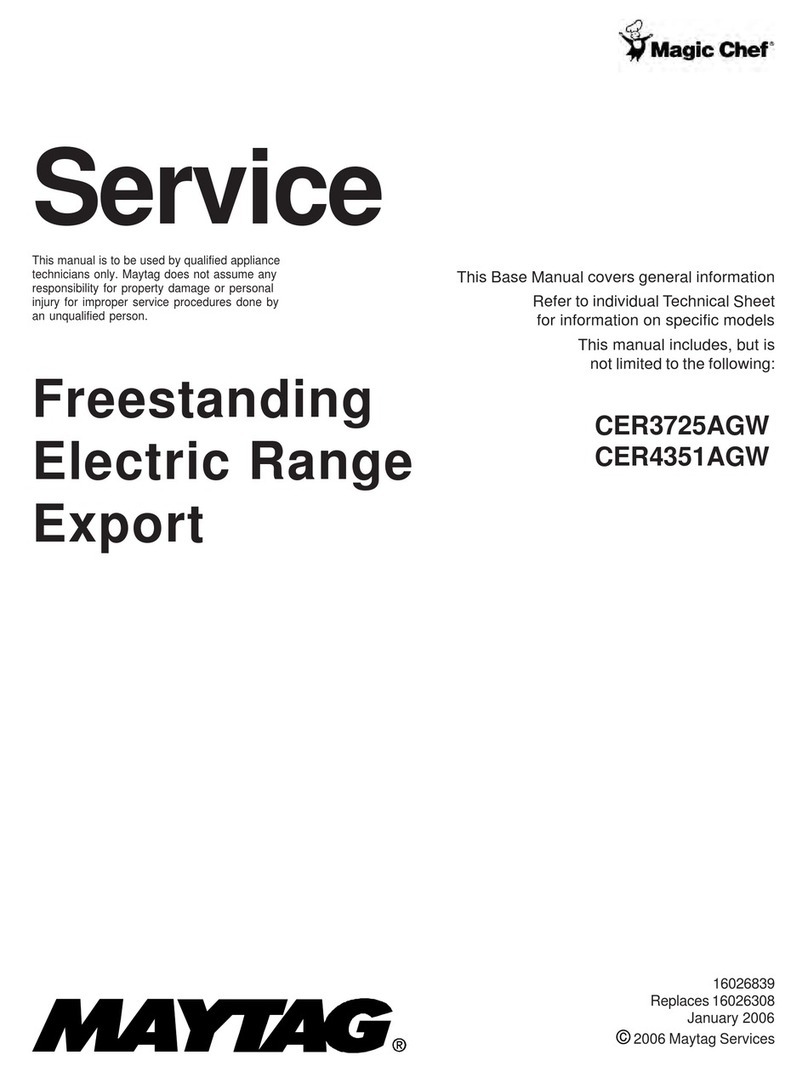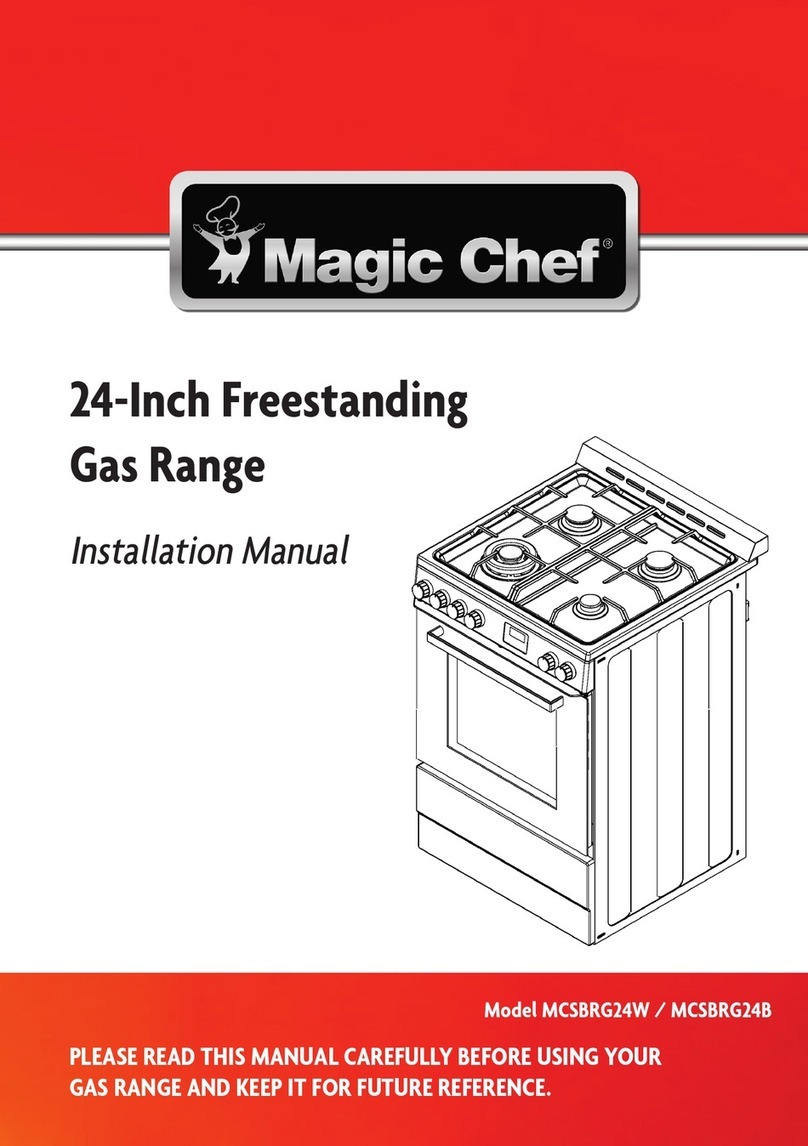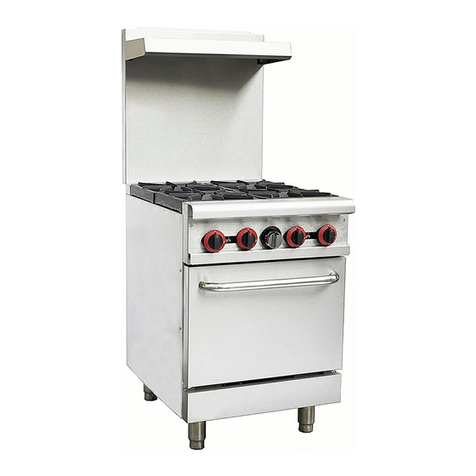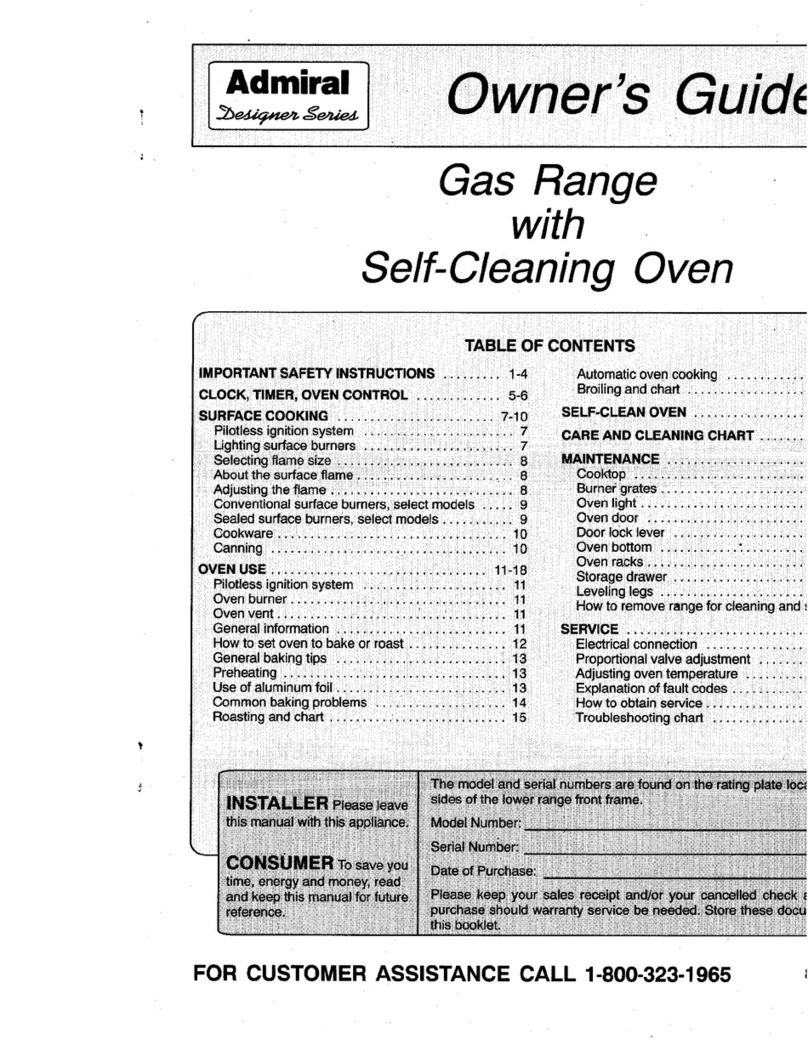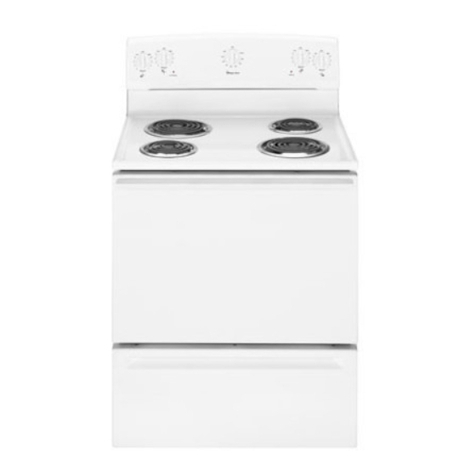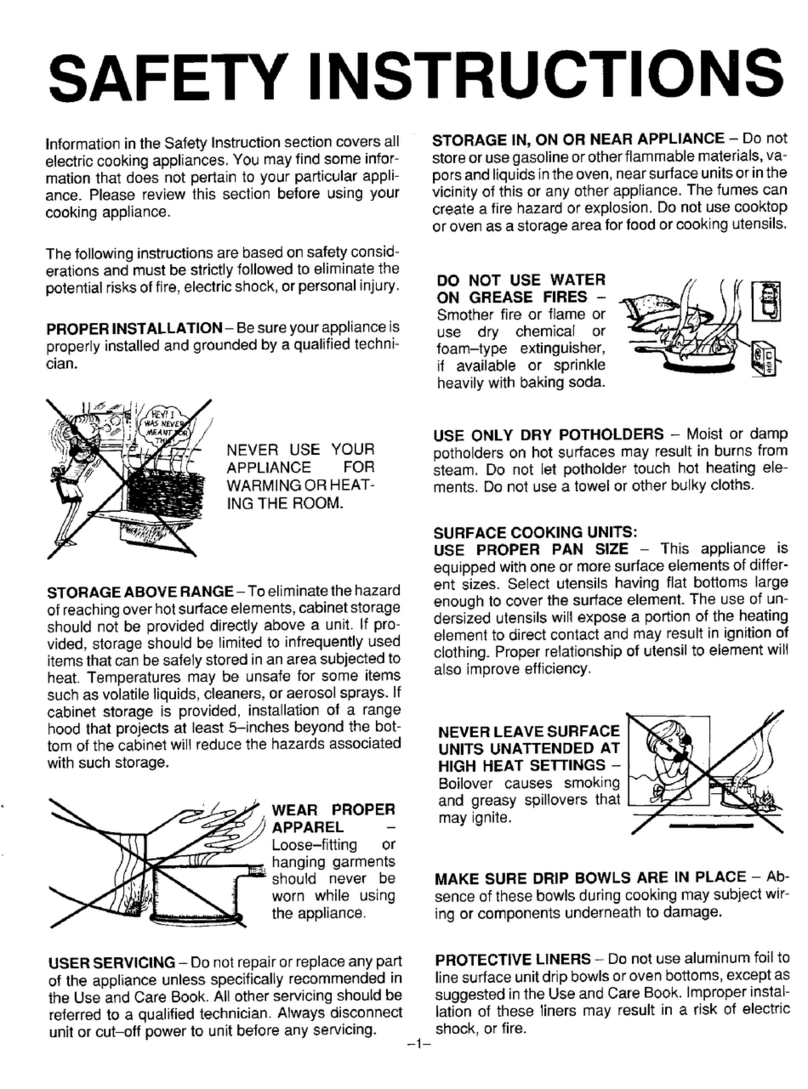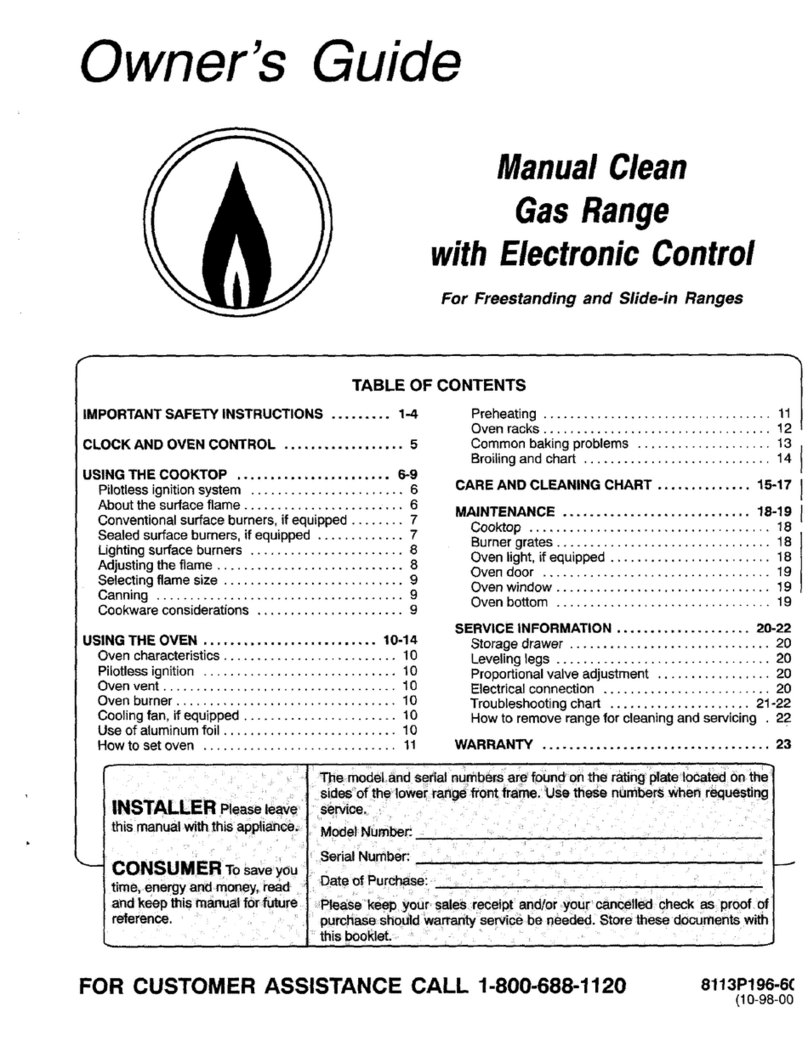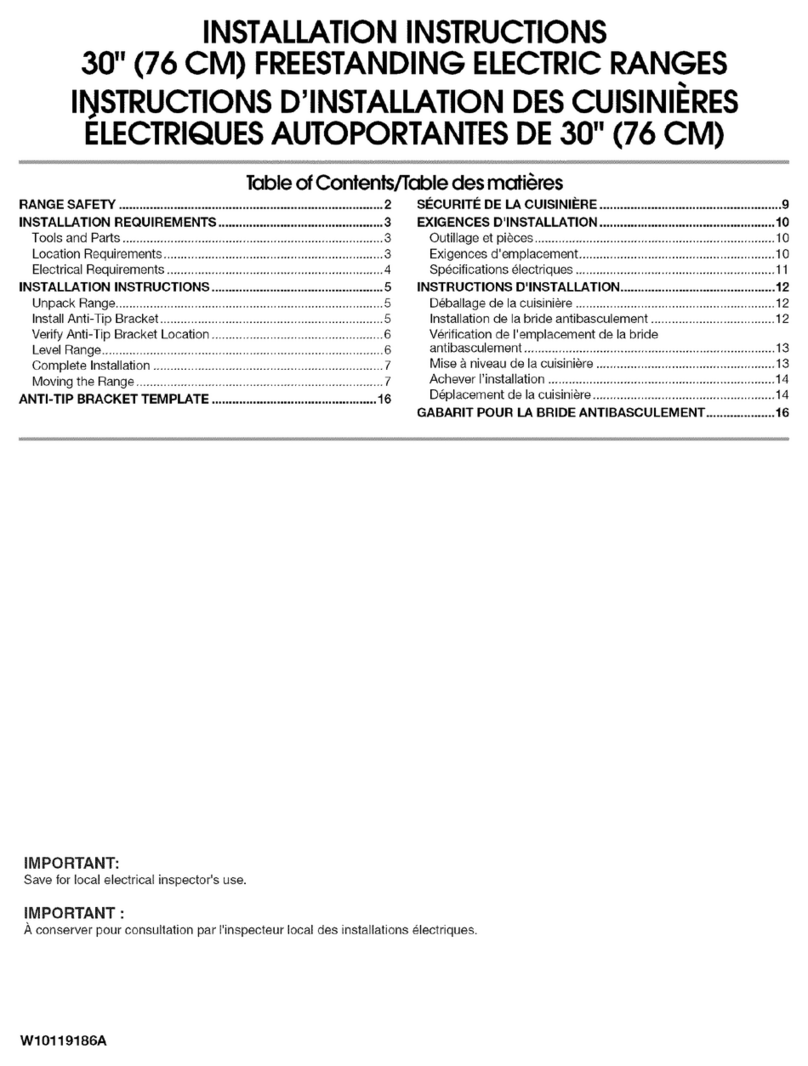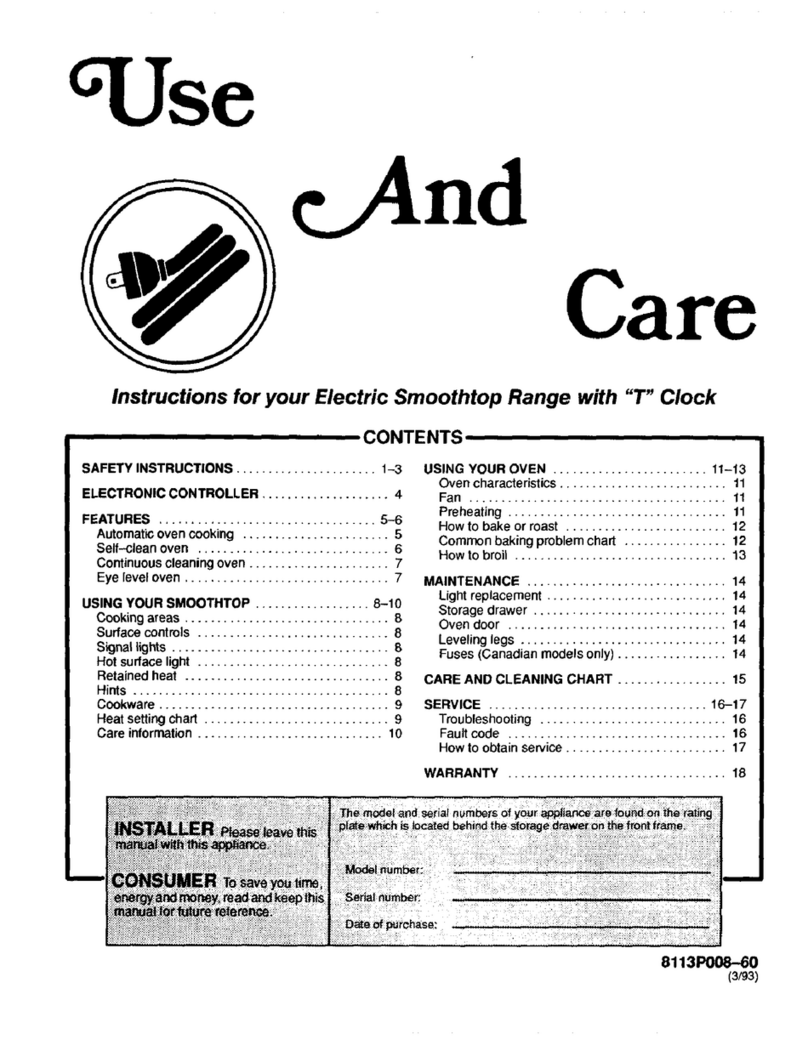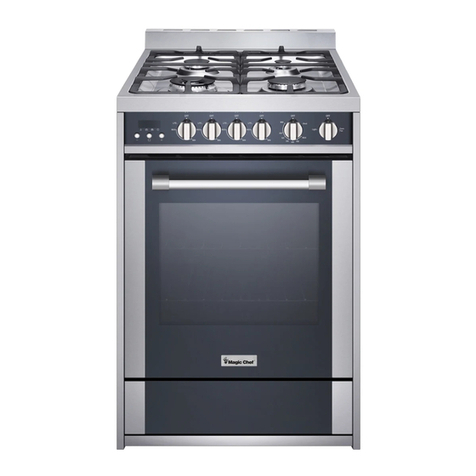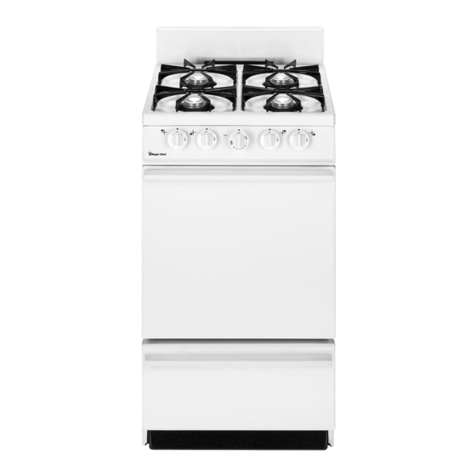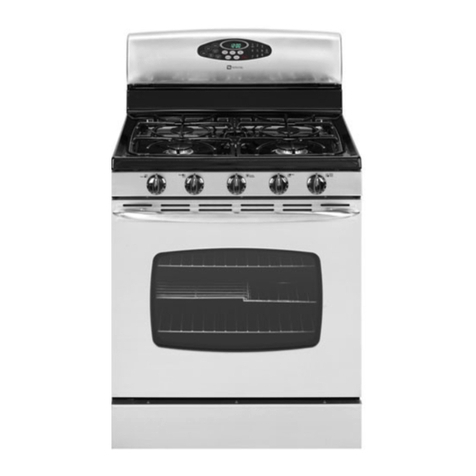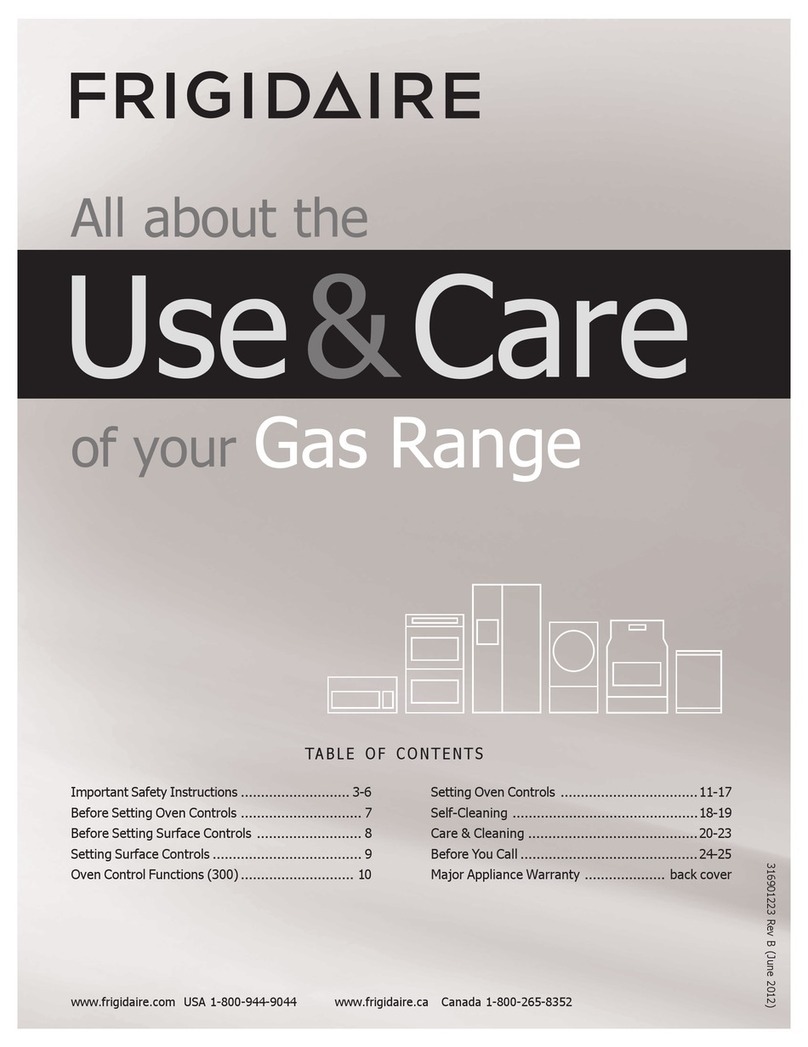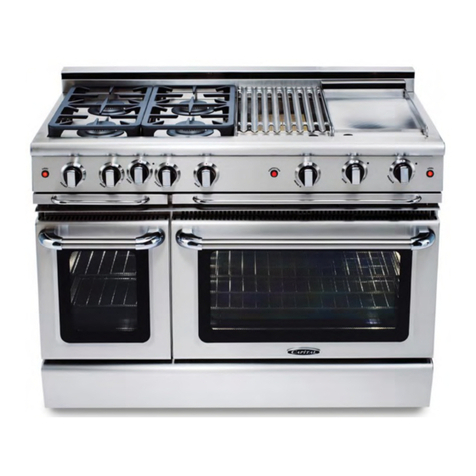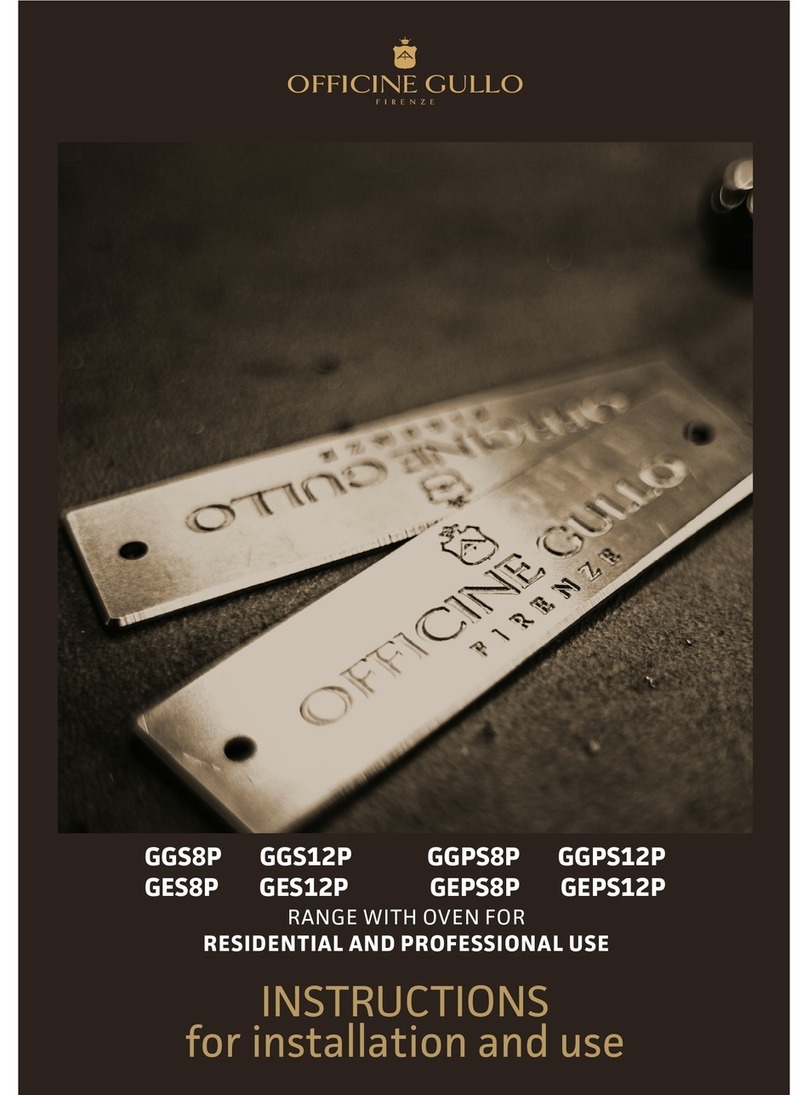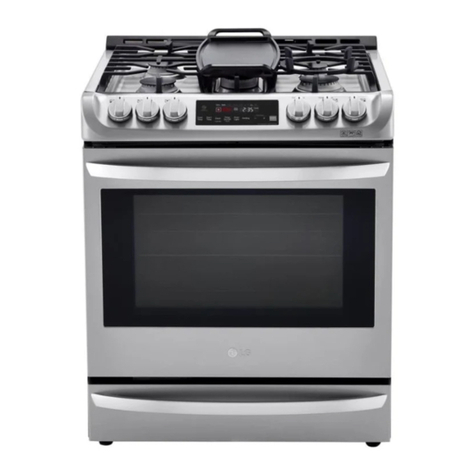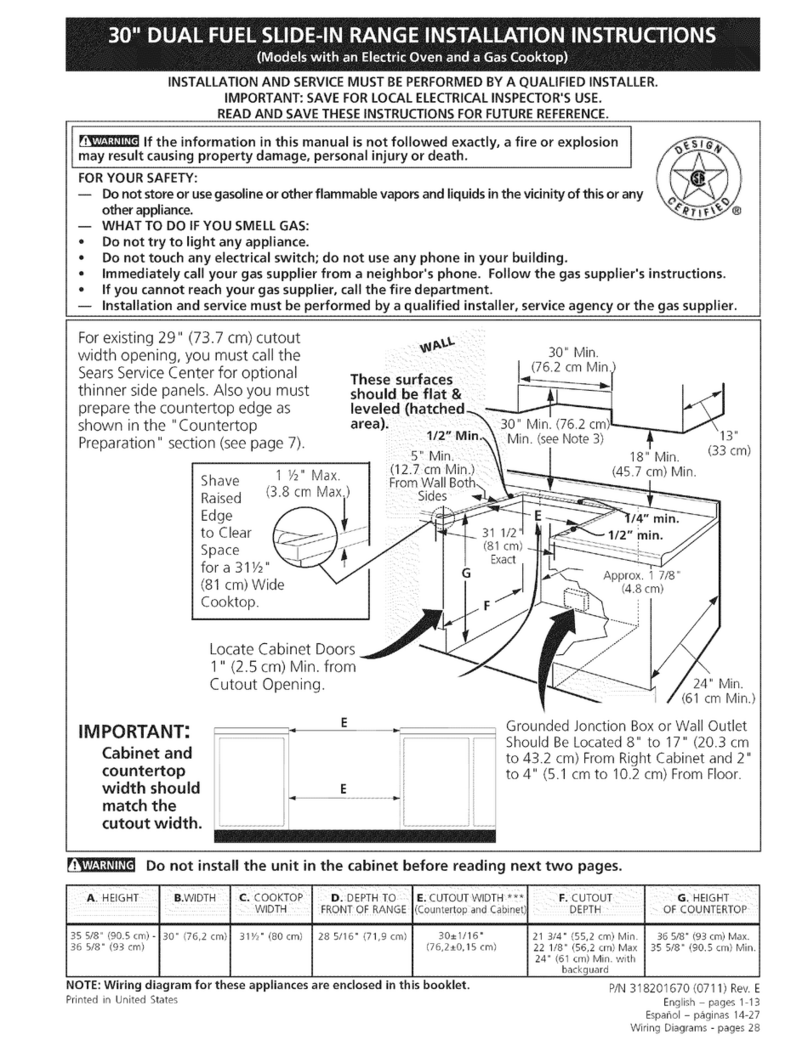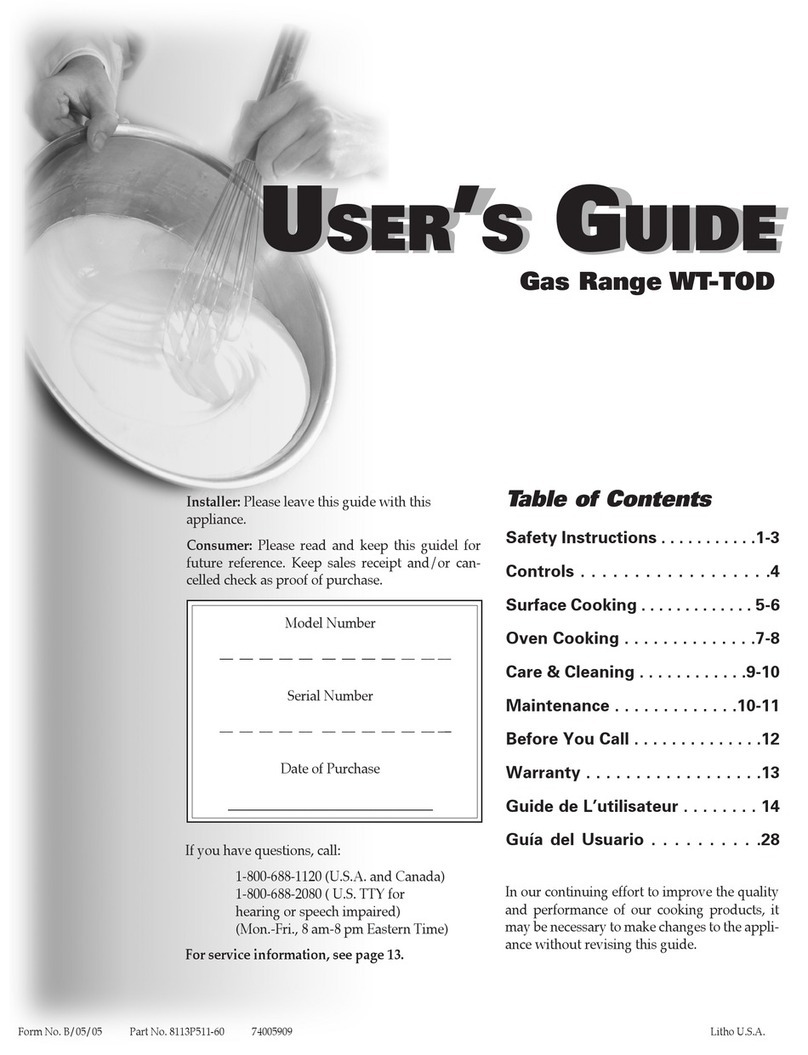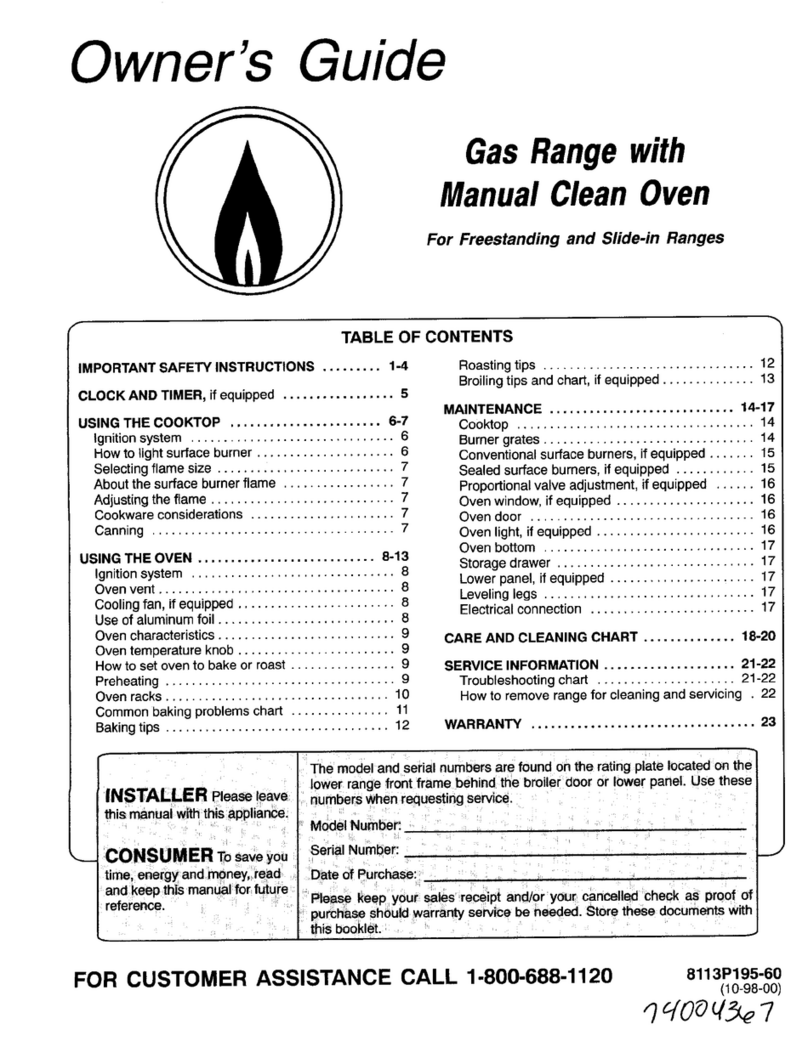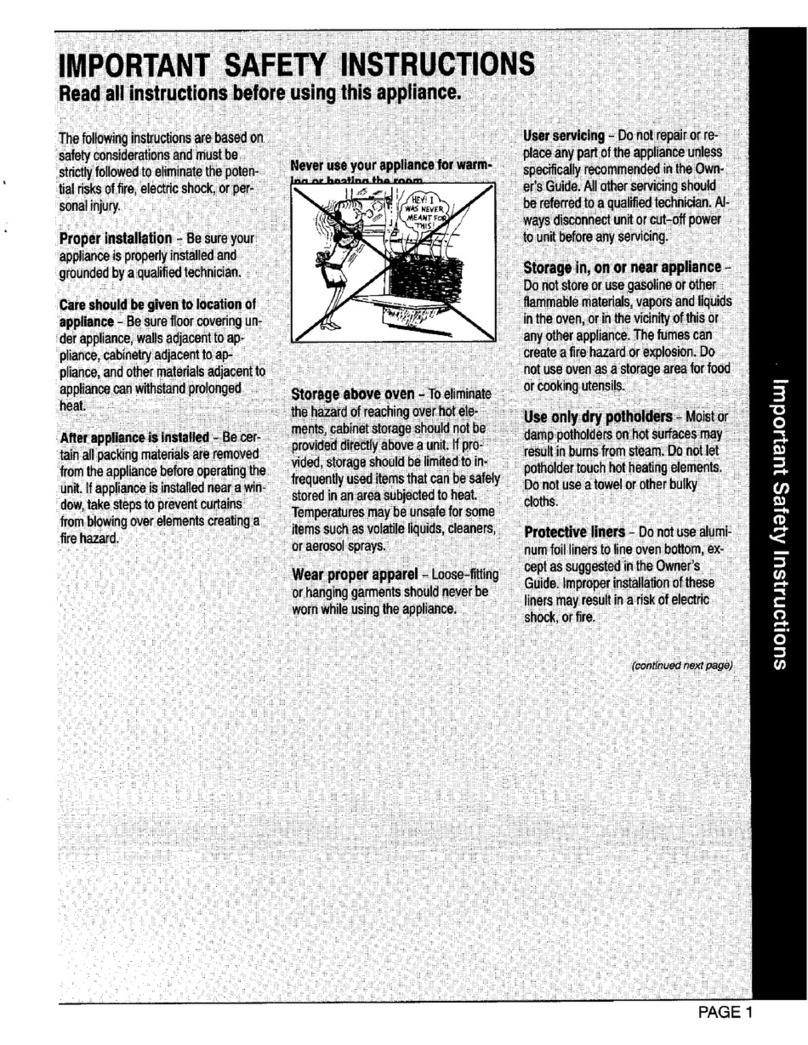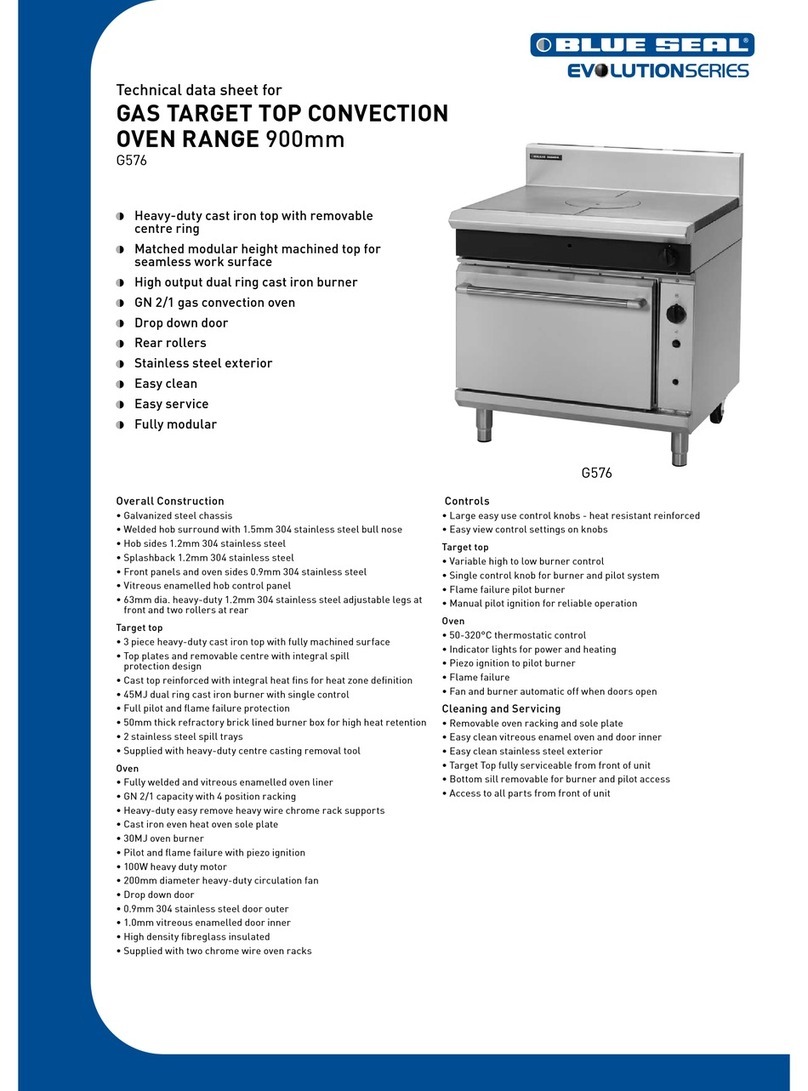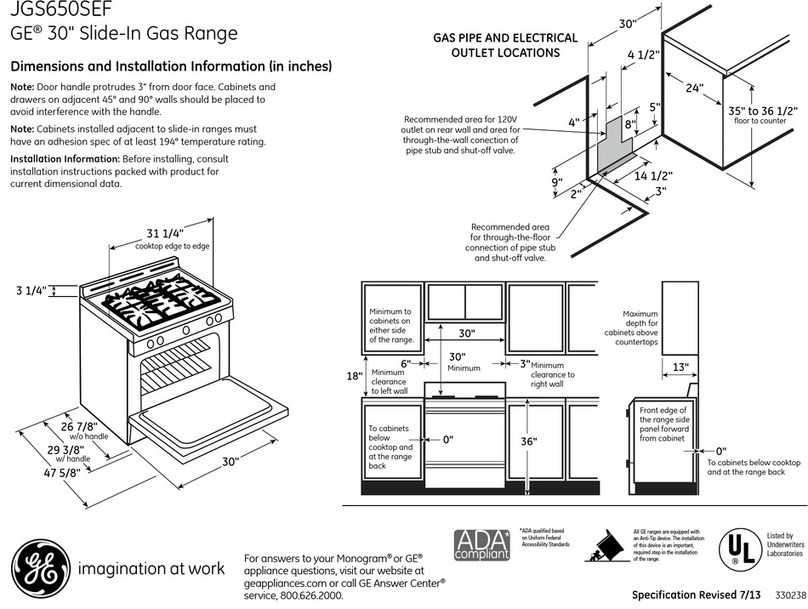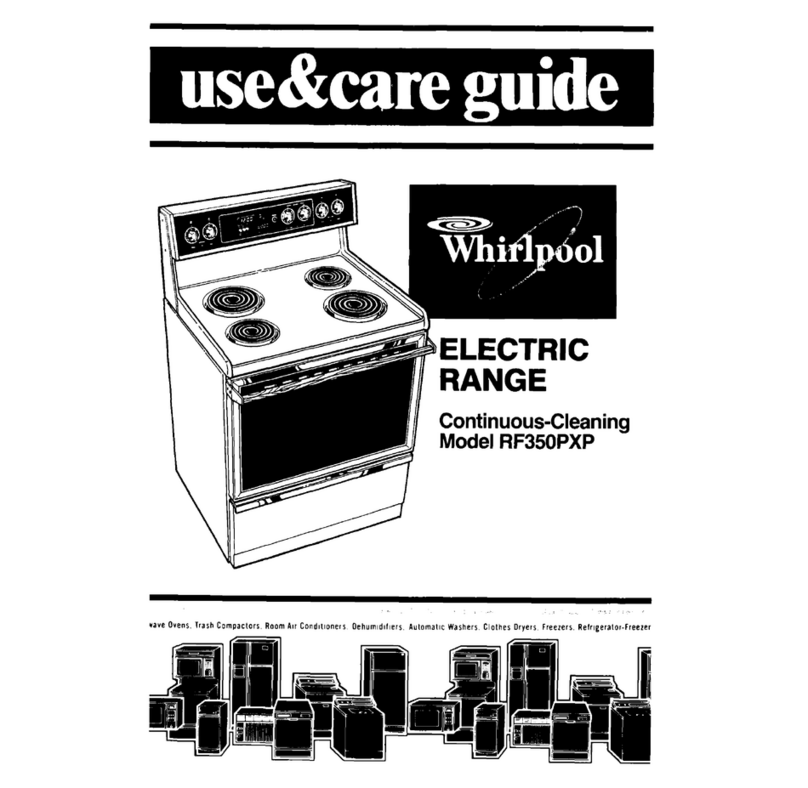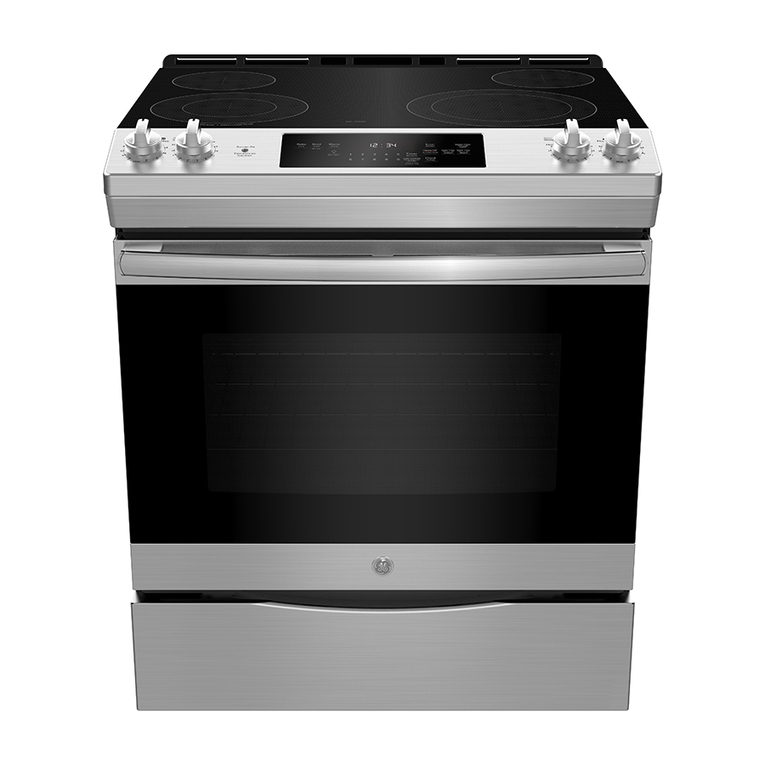SAFETY INSTRUCTIONS
GLAZED COOKING UTENSILS - Only certain types VENTILATING HOODS:
ofglass, glass/ceramic, ceramic, earthenware, or CLEAN VENTILATING HOODS FREQUENTLY-
other glazed utensils aresuitablefor range-top serv- Greaseshould not beallowed to accumulateon hood
icewithoutbreaking duetothesudden changein tern- or filter. Whenflaming foods under thehood, turn the
perature,fanoff. Thefan,ifoperating, may spread theflame.
IMPORTANT SAFETY NOTICE AND WARNING
UTENSIL HANDLES TheCalifornia SafeDrinkingWater and Toxic Enforce-
SHOULD BE ment Act of 1986 (Proposition 65) requirestheGover-
TURNED INWARD norofCalifornia to publisha listofsubstances known
AND NOT EXTEND to theStateof California to causecancer or reproduc-
OVER ADJACENT tiveharm, and requires businesses towarn customers
SURFACE UNITS - ofpotential exposures to such substances.
To reducetherisk of
burns, ignitionof flam- Users of this appliance arehereby warned that when
mablematerials, and theapplianceis engaged in theself-clean cyclethere
spillagedueto unin- may besomelow-levelexposuretosomeofthelisted
tentional contact with theutensil,thehandleofa uten- substances, including carbon monoxide. Exposureto
sil should be positioned so that it is turned inward, and these substances can be minimized by properly vent-
does not extend over adjacent surface elements, ing the appliance to the outdoors during the self-clean
cycle.
DO NOT SOAK REMOVABLE HEATING ELE-
MENTS - Heating elements should never beira- DEEP FAT FRYERS:
mersed in water. Immersing element in water would Use extremecautionwhen movingthegreasekettleor
damageinsulatingmaterial inside element, disposingofhot grease.
DO NOT TOUCH SURFACE ELEMENTS OR OVEN
OVENS: ELEMENTS, AREAS NEAR ELEMENTS OR INTE-
USE CARE WHEN OPENING DOOR - Let hot airor RIOR SURFACES OF OVEN - Elements may behot
steam escapebeforeremoving or replacing food. even thoughthey aredark in color.Areas near surface
elements and interior surfaces ofovenmay become
DO NOT HEAT UNOPENED FOOD CONTAINERS - hot enough to causeburns. During and after use, do
Build-up ofpressuremay causecontainer to burstand not touch or let clothing or otherflammablematerials
contact heating elements, areas near elements or in-
result in injury, terior surfaces ofoven until they havehad sufficient
timeto cool. Among theseareas arethecooktop, sur-
KEEP OVEN VENT DUCTS (located under rear ele-faces facing thecooktop, oven vent opening and sur-
merit; rear corner of cooktop; between oven door and faces near this opening, oven door, and oven window.
control panel ofwall oven or on backguard) UNOB- Also, do not allow aluminum foil, meat probes or any
STRUCTED. Blockage of vent prevents proper oven other metal object, other than a utensil on a surface
air circulation and will affect oven performance. Avoid element, to contact heating elements.
touching oven vent area while oven is on and for sev-
eral minutes after oven is turned off. Some parts of the ANTI-TIP BRACKET:
vent and surrounding area become hot enough to WARNING: To reduce the risk of tipping of the appli-
cause burns, ance from unusual usage or by excessive loading of
the oven door, the appliance must be secured by a
PLACEMENT OF OVENRACKS- Always place oven properly installed anti-tip device.To check if device is
racks in desired location while oven is cool. If rack installed properly: Use a flashlight and look under-
must be moved while hot, use care to avoid contact of neath range to see that one of the rear leveling legs is
engaged in the bracket slot. When removing appliance
potholder with oven element,for cleaning, be sure anti-tip device is engaged when
range is replaced. The anti-tip device secures the rear
leveling leg to the floor, when properly engaged.
-2-
